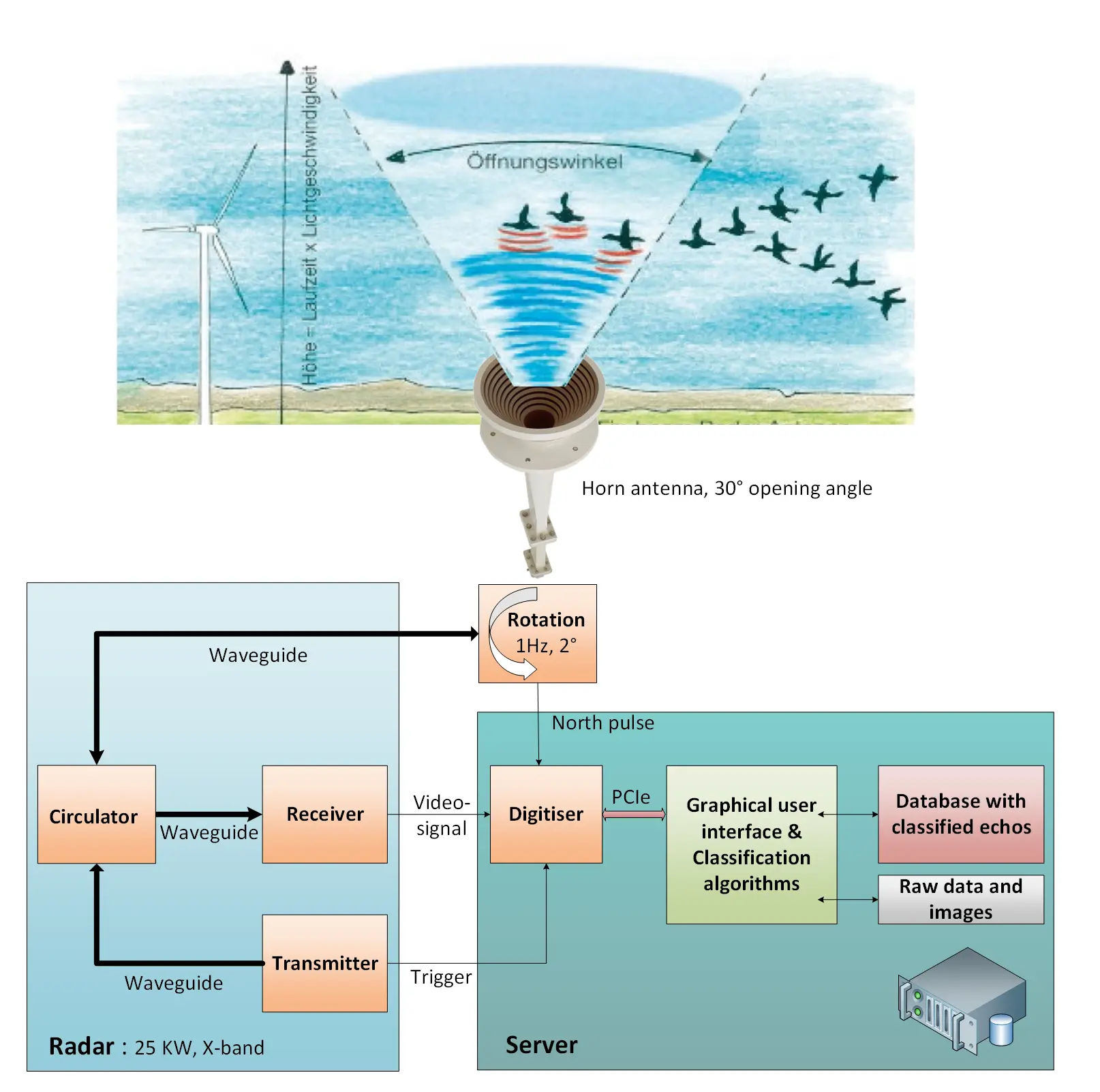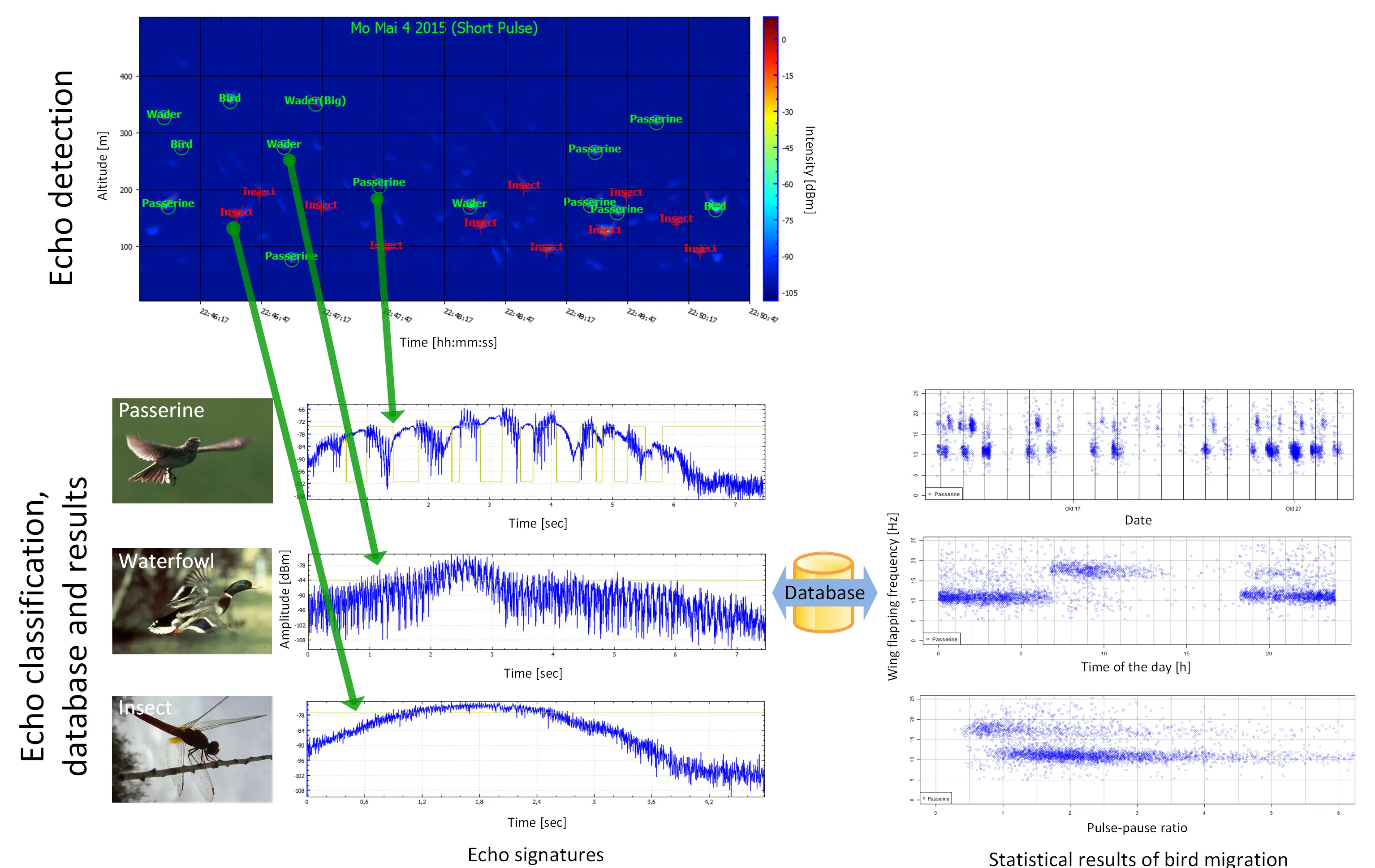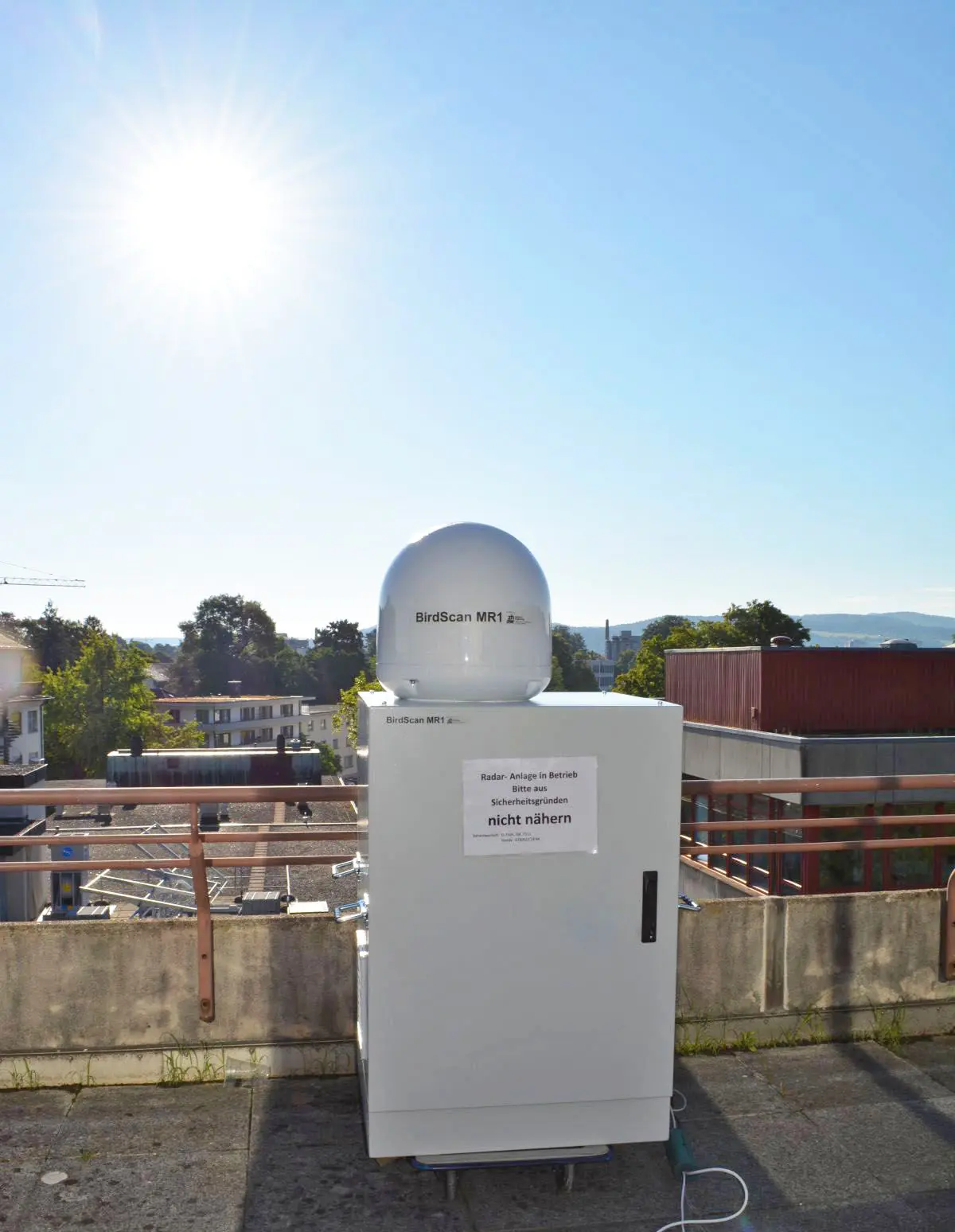Birdscan MR1 Radar
Automated monitoring of bird migration by radar: identification and quantification in real time
Radar systems can monitor mass movements of migrating birds. Static radar beam systems quantify the spatio-temporal distributions of bird migration, but provide no information on flight parameters. The radar system BirdScan MR1 detects the flight speed and direction, and performs real time classification of targets based on their wing flapping patterns.
BirdScan MR1
Methods & Results
The BirdScan MR1 is a radar developed for avian observations. Most importantly, it has the ability to detect and classify birds. In addition, an estimation of the direction and velocity of the overflying objects is possible.
The BirdScan MR1 hardware consists of a pulse-radar and a server (see picture below). The radar comprises an antenna, a transmit unit and a receiver. The server is composed of a digitizer which converts the analogue input signals into digital data and a software that processes the incoming data.
The transmit unit generates approximately 1800 pulses per second which are propagated to the antenna. The pulse may be backscattered due to overflying objects and received by the same antenna after some time delay. The time delay depends on the distance of the object to the radar. The received signal is converted into a digital signal by the digitizer and processed by the software.
The software extracts the relevant information from the data. Each object generates its own echo which can be analysed and classified. The classification is based on features that are extracted from the echoes. Most importantly, the wing flaps of birds are visible as intensity modulations in the signal. Therefore a wing flapping frequency can be determined and used for classification. More features like the pulse-pause behaviour (bursts of wing flapping and intermittent pauses) or the radar cross-section (which gives information about the size of the object) are evaluated.
The antenna of the radar can be rotated in order to get information about the direction and speed of objects. By means of a slightly tilted antenna the echo intensities are modulated due to the changing angle between the radar antenna and the object. These modulations are compared to an impulse that is generated each time the antenna reaches a defined position. The rotation frequency is about 0.8 rotations per second.



Publications
Tagesanzeiger: Rettung vor den tödlichen Rotoren
Automated monitoring of bird migration by radar: identification and quantification in real time (PDF 1.23 MB) (10th Conference of the European Ornithologists Union 2015, Badajoz (Spain)
At a glance
Participating institutes and centres
Project partners:
Funding: direct by project partners
Project status: finalized
